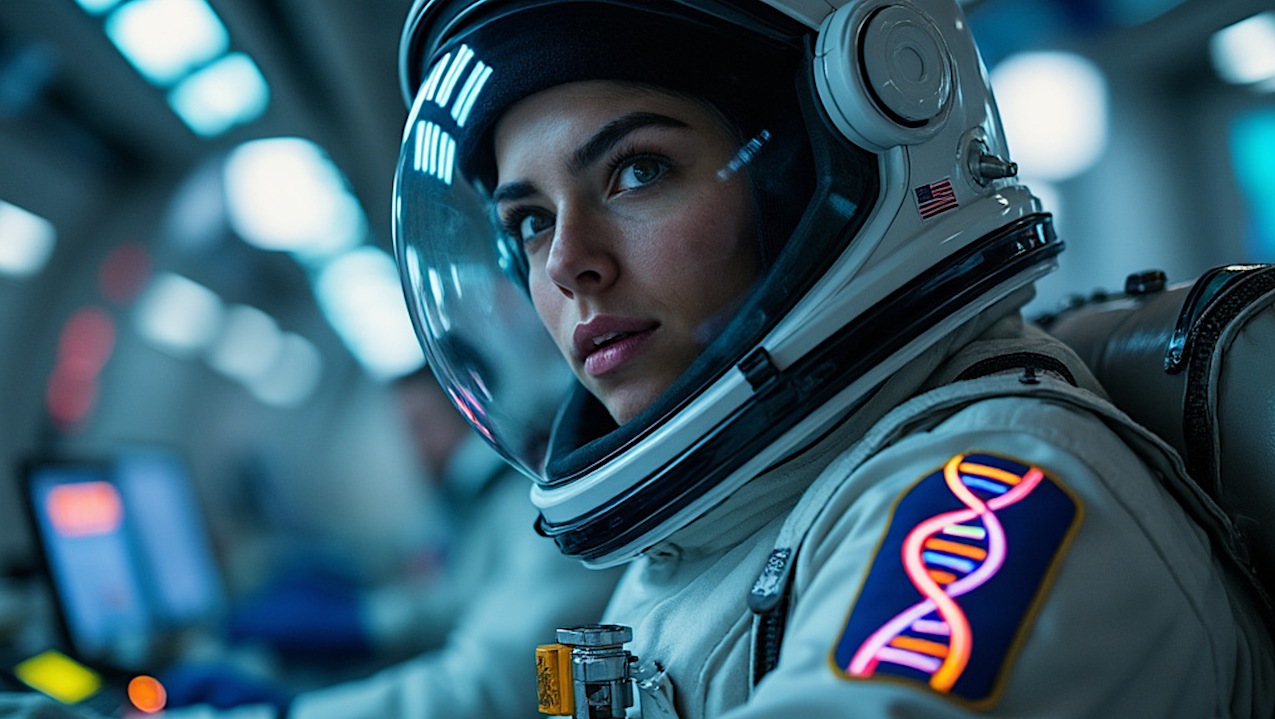The abstract in PubMed or at the publisher’s site is linked when available and will open in a new window.
Hasenstein KH, Moinuddin SGA, Berim A, Davin LB, Lewis NG.Glucosinolate and sugar profiles in space-grown radish.Plants (Basel). 2025 Jul 6;14(13):2063.PIs: K.H. Hasenstein, N.G. LewisNote: ISS results. This article is part of Section “Plant Physiology and Metabolism” (https://www.mdpi.com/journal/plants/sections/Plant_Physiology_Metabolism) and may be obtained online without charge.
Journal Impact Factor: 4.1
Funding: “This work was supported by the National Aeronautics and Space Administration grants NNX10AP91G, NNH18ZHA004C, and 80NSSC17K0344 to K.H.H. and by NASA grant NNX15AG56G to N.G.L., the USDA National Institute of Food and Agriculture grants Hatch umbrella project #1015621, and the Arthur and Katie Eisig-Tode Endowment Fund to N.G.L.”
Adamopoulos KI, Sanders LM, Hoarfrost A, Costes SV.Deep cross-organism generalization of the physiological effects of spaceflight from mammalian model organisms to humans.Gravit Space Res. 2025 Jul 1;13(1):39-50.Note: From the abstract: “In our present study, we identified enriched terms and pathways associated with significantly dysregulated genes within each species and across orthologous counterparts. We also generated AI-ready merged meta-datasets comprised of musculoskeletal tissues from Mus musculus and Homo sapiens organisms. We then applied a series of supervised Machine Learning models to classify genes that were significantly over-expressed and under-expressed. Subsequently, we explored the utility of Transfer Learning in this domain by pretraining a model on the larger Mus musculus merged dataset and then refining it on the smaller Homo sapiens dataset.” This article may be obtained online without charge.
Journal Impact Factor: 0.842
Funding: K.I. Adamopoulos, L.M. Sanders, and S.V. Costes are affiliated with NASA Ames Research Center.
Onofri S, Moeller R, Billi D, Balsamo M, Becker A, Benvenuto E, Cassaro A, Catanzaro I, Cockell CS, Desiderio A, Ellis T, Gonzáles-Pastor JE, Hahn C, Leys N, Leo P, Maurel MC, Pacelli C, Pavletic B, Ripa C, Rothschild LJ, Surdo L.Synthetic biology for space exploration.npj Microgravity. 2025 Jul 12;11(1):41.Note: This article is a Perspective and may be obtained online without charge.
Journal Impact Factor: 5.1
Funding: L.J. Rothschild is affiliated with NASA Ames Research Center.
Sarma MS, Niclou AM, Hurd KJ.Methodologic opportunities for space health research: Integrating biological anthropology methods in human research for precision space health and medical data.Wilderness Environ Med. 2025 Jul 7;10806032251349436. Online ahead of print.PI: M.S. SarmaNote: This article appeared in the “Other” section of the list and is being included this week along with the NASA funding note. This article may be obtained online without charge.
Journal Impact Factor: 1.4
Funding: NASA PI reports NASA support.
Suh A, Szeto JJ, Ong J, Armstrong GW, Robert Gibson C, Mader TH, Lipsky W, Waisberg E, Berdahl J, Hinkle DM, Lee AG.Ocular trauma in microgravity: In-flight diagnostics and extraterrestrial strategies for management.Surv Ophthalmol. 2025 Jul 15. Review. Online ahead of print.Note: This article may be obtained online without charge.
Journal Impact Factor: 5.9
Funding: C. Robert Gibson is affiliated with NASA Johnson Space Center.
Waithe OY, Anderson A, Muthusamy S, Seplovich GM, Tharakan B.Homocysteine induces brain and retinal microvascular endothelial cell barrier damage and hyperpermeability via NLRP3 inflammasome pathway cifferentially.Microcirculation. 2025 Jul 17;32(5):e70019.Note: This article may be obtained online without charge.
Journal Impact Factor: 2
Funding: “This work was supported by National Aeronautics and Space Administration.”
Dao J, Liu R, Solomon S, Solomon SA.Using electrooculography and electrodermal activity during a cold pressor test to identify physiological biomarkers of state anxiety: Feature-based algorithm development and validation study.JMIRx Med. 2025 Jul 10;6:e69472.Note: This article may be obtained online without charge.
Journal Impact Factor: 3.4
Funding: “This work was funded by the Translational Research Institute for Space Health through NASA NNX16AO69A, Office of Naval Research grants N00014-21-1-2483 and N00014-21-1-2845, Army Research Office grant W911NF-23-1-0041, National Institutes of Health grants R01HL155815 and R21DK13266, National Science Foundation grant 2145802, National Academy of Medicine Catalyst Award, and High Impact Pilot Research Award T31IP1666 from the Tobacco-Related Disease Research Program.”
Gaither JB, French R, Knotts M, Lerman M, Harrell AJ, McIntosh S, Rice AD, Cole R, Gilmore S, Hindman DE, Edwards C, Nguyen HN, Truxillo M, West J, Yeoh A, Davis T, Shirazi FM, Wilson BZ, Debevec JT, Schertz M, Walter FG.Consensus guideline for care of patients in the prehospital and aerospace settings with exposures to hydrazine and hydrazine derivatives.Prehospital Emergency Care. 2025;1-9.Note: From the abstract: “Hydrazine (HZ) and Hydrazine Derivative (HZ-D) exposures pose health risks to people in industrial and aerospace settings. Several recent systematic reviews and case series have highlighted common clinical presentations and management strategies. Given the low frequency at which HZ and HZ-D exposures occur, a strong evidence base on which to develop an evidence-based guideline does not exist at this time. Therefore, the aim of this project is to establish a consensus guideline for prehospital care of patients with exposures to HZ and HZ-Ds.”
Journal Impact Factor: 2.1
Funding: R. Cole and S. Gilmore are affiliated with National Aeronautics and Space Administration.
Cheburkanov V, Jung S, Kizilov M, Holt SE, Alge DL, Ware TH, Yakovlev VV.Brillouin spectroscopy: A non-invasive method for assessing the viscoelastic properties of biologically relevant polymers.J Biomed Mater Res A. 2025 Jul 13;113(7):e37965.Note: This article may be obtained online without charge.
Journal Impact Factor: 3.9
Funding: “This work was supported by the Air Force Office of Scientific Research; National Institutes of Health; National Aeronautics and SpaceAdministration.”
Astrobiology, space biology, space life science, space medicine, Microgravity, ISS,
